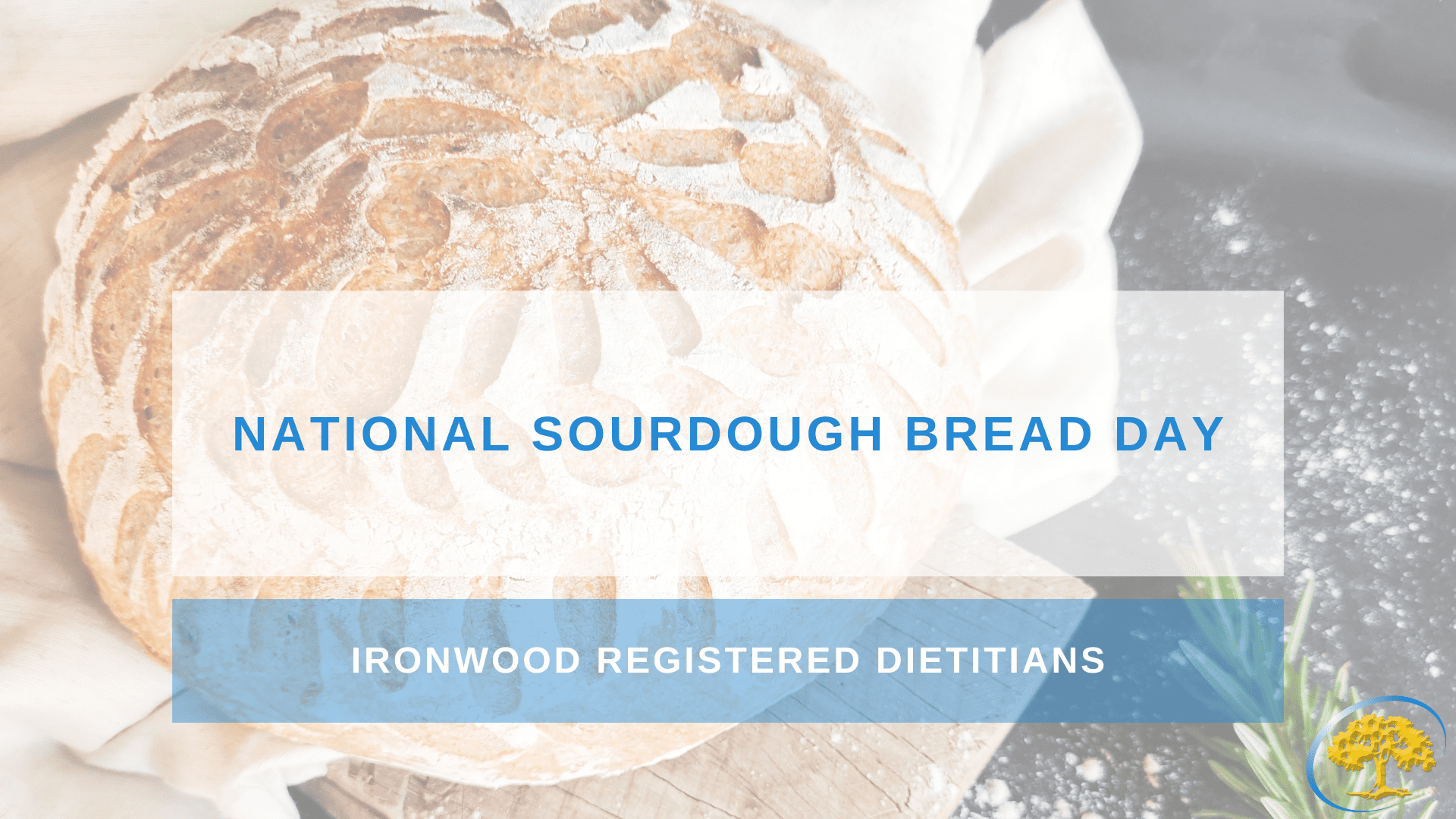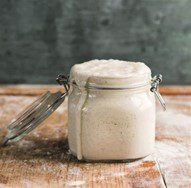
Posted 1 month ago
National Sourdough Bread Day
April 1st is not only April Fool’s Day but also, National Sourdough Bread Day! I am sure everyone is hearing the recent hype revolving around this “old” bread. The earliest known record of sourdough extends back to 1500 BC when the Egyptians were the first to mix wild yeast
into their bread. This leavened bread (bread that rises due to yeast or other ingredients) is enjoyed in many cultures around the world. Instead of using baker’s yeast, sourdough bread relies on a starter, which is a mixture of water and flour that develops a population of “wild” yeast. This yeast produces lactic acid, the source of sourdough bread’s distinctive tangy taste. This acid both flavors the bread and kills unwanted bacteria, keeping a sourdough starter safer from going bad.
Potential Health Benefits of Sourdough Bread
General Body Functions
Sourdough bread is particularly rich in nutrients that the body can easily absorb. This is due to the way that the lactic acid bacteria in the bread can destroy certain types of acid commonly found in other types of bread, which increases the availability of nutrients like folate, potassium, and magnesium.
Excellent Source Of:
– Calcium- helps with muscle and nerve function and make bones.
– Potassium- regulates heartbeat, nerve and muscle function and is necessary to make proteins and metabolize carbs.
– Magnesium- regulates muscle and nerve function, control blood sugar, helps make protein, DNA and bones
– Folate- important for cell division and DNA.
– Niacin- B vitamin that helps convert food into energy. Help with cholesterol control, digestive and nervous system functioning.
Disease Prevention
The lactic acid bacteria are also responsible for increased antioxidants in sourdough bread compared to other types of bread. Studies have shown that antioxidants, like the peptides found in sourdough can lower the risk for certain types of Cancer, Heart disease, Alzheimer’s and other chronic diseases related to inflammation.
Lower Blood Sugar Levels
Sourdough bread has less of an effect on blood sugar and insulin levels, which is termed a lower glycemic index. This could make it a better option for those with diabetes, heart disease, high cholesterol, insulin resistance or metabolic syndrome.
Easier to Digest
Sourdough bread may be easier to digest than white bread for some people. According to some studies, sourdough bread acts as a prebiotic, which means that the fiber in the bread helps feed the “good” bacteria in your intestines. These bacteria are important for maintaining a stable, healthy digestive system.
Sourdough is also lower in gluten than other forms of bread. It appears that the acid in the bread degrades gluten. As a result, people with gluten intolerance may find that sourdough is easier on their stomach.
Natural Yeast is Tolerated Better
Today’s baker’s yeast is made in mass from a single strain of yeast called Saccharomyces cerevisiae. On the other hand, natural yeast starters are a community of many strains of yeast and bacteria with health benefits, like lactobacilli. Many people tend to have intolerances to S. Cerevisiae but do fine with the natural yeast found in true sourdough. A Mediator release test can confirm.
Longer Shelf Life Without Chemicals
Because it has a lower pH, sourdough lasts longer at room temperature than other homemade breads, without the preservatives and other additives.
Potential Risks of Eating Sourdough Bread
Not Gluten-Free
While sourdough bread is usually lower in gluten, it is not gluten-free. People with a gluten intolerance may find that sourdough is easier to digest, but people with celiac disease will likely still experience symptoms if they eat sourdough bread.
Gluten-Free Wheat Bread
For something to be labeled “Gluten Free,” the FDA mandates it must have less than 20 ppm (parts per million) of gluten contamination. Multiple studies show that whole wheat flour allowed to ferment long enough contains much less than 20ppm. (Regular wheat bread contains upwards of 80,000 ppm, as a reference.)
One study showed that patients with Celiac’s Disease who ate sourdough baked goods for 2 months (made with flour that fermented for 48 hours) showed no symptoms, no small intestine damage and zero rise in levels of an autoimmune antibody.
How to make a Sourdough Stater
Ingredients
2 cups warm water
1 tbsp sugar or honey
1 tbsp active dry yeast
2 cups unbleached all-purpose flour
Instructions
Pour the water into a 2-quart glass or ceramic jar or bowl. Stir in the sugar or honey to dissolve. Stir in the yeast.
Gradually whisk in the flour. Cover loosely with a clean kitchen towel or dishcloth (not plastic wrap) and place it in a warm area.
Let it develop 2-5 days, stirring once a day due to the separation that will occur. When bubbling has subsided and a sour aroma has developed, stir once more, and refrigerate until ready to use.
Storing and Maintaining Your Starter
Once your starter is stored away in the refrigerator, it only needs to be replenished once every two weeks or so. Feed your starter each time you remove a portion for use in baking, but if it has been two weeks and you don’t intend to bake with it immediately, simply remove a cup of the starter and discard. For every 1 cup of starter removed, replace with 1 cup of flour and ½ cup of water. Stir to blend and let sit at room temperature for at least 12 hours before returning to the refrigerator.


